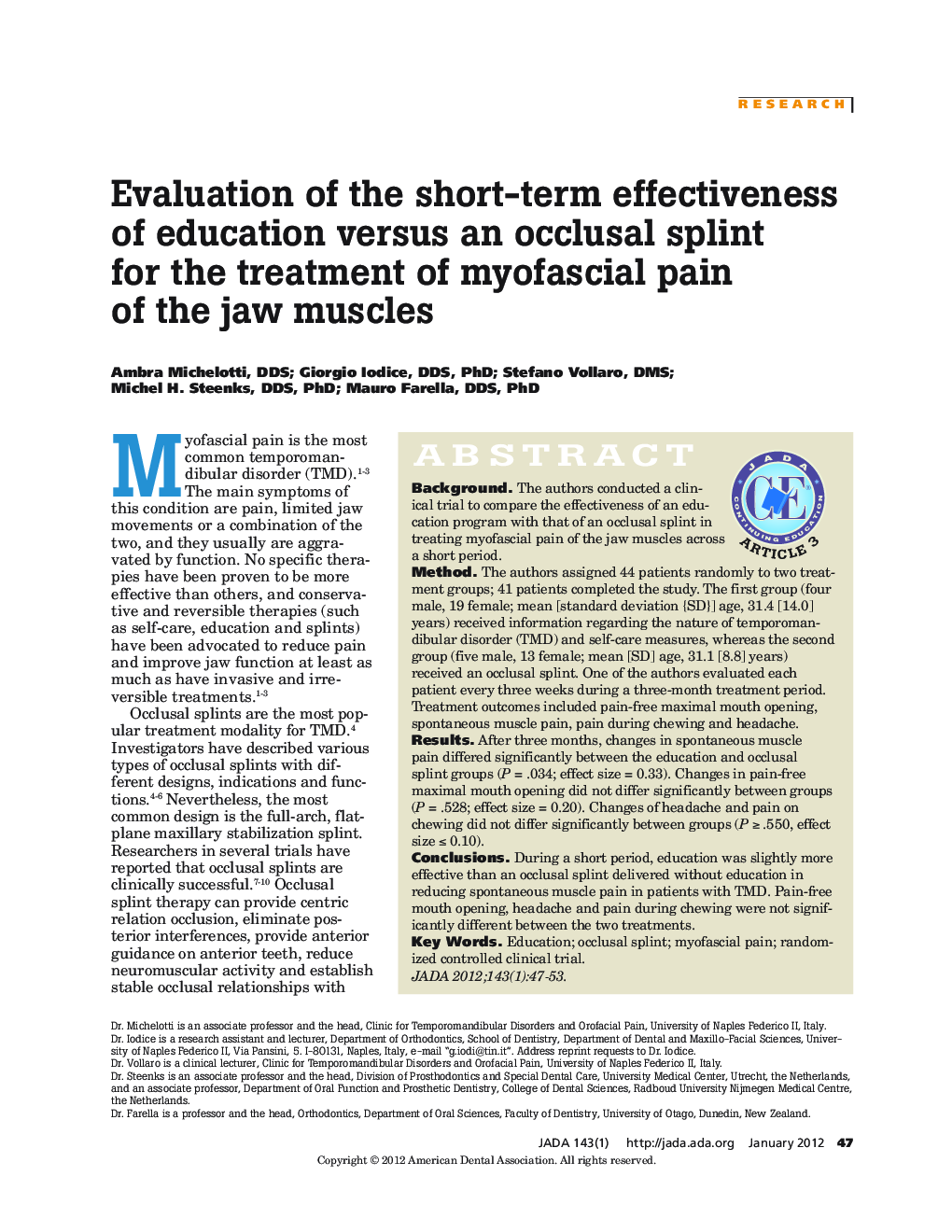| Article ID | Journal | Published Year | Pages | File Type |
|---|---|---|---|---|
| 3137915 | The Journal of the American Dental Association | 2012 | 7 Pages |
ABSTRACTBackgroundThe authors conducted a clinical trial to compare the effectiveness of an education program with that of an occlusal splint in treating myofascial pain of the jaw muscles across a short period.MethodThe authors assigned 44 patients randomly to two treatment groups; 41 patients completed the study. The first group (four male, 19 female; mean [standard deviation {SD}] age, 31.4 [14.0] years) received information regarding the nature of temporomandibular disorder (TMD) and self-care measures, whereas the second group (five male, 13 female; mean [SD] age, 31.1 [8.8] years) received an occlusal splint. One of the authors evaluated each patient every three weeks during a three-month treatment period. Treatment outcomes included pain-free maximal mouth opening, spontaneous muscle pain, pain during chewing and headache.ResultsAfter three months, changes in spontaneous muscle pain differed significantly between the education and occlusal splint groups (P = .034; effect size = 0.33). Changes in pain-free maximal mouth opening did not differ significantly between groups (P = .528; effect size = 0.20). Changes of headache and pain on chewing did not differ significantly between groups (P ≥ .550, effect size ≤ 0.10).ConclusionsDuring a short period, education was slightly more effective than an occlusal splint delivered without education in reducing spontaneous muscle pain in patients with TMD. Pain-free mouth opening, headache and pain during chewing were not significantly different between the two treatments.
